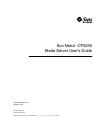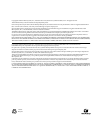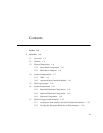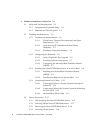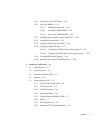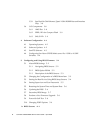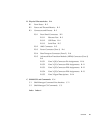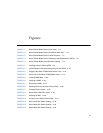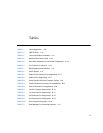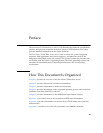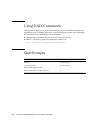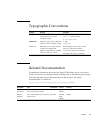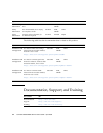
iv Sun Netra CP3250 Blade Server User’s Guide • April 2009
2. Hardware Installation and Service 2–1
2.1 Safety and Tool Requirements 2–2
2.1.1 Equipment and Operator Safety 2–2
2.1.2 Materials and Tools Required 2–3
2.2 Installing the Blade Server 2–4
2.2.1 Preparing for the Installation 2–4
2.2.1.1 Check Power, Thermal, Environmental, and Space
Requirements 2–4
2.2.1.2 Local Network IP Addresses and Host Names
Worksheet 2–5
2.2.1.3 Installation Procedure Summary 2–6
2.2.2 Configuring the Hardware 2–6
2.2.2.1 Verify Chassis Fan Tray Upgrade 2–6
2.2.2.2 Installing Optional Components 2–7
2.2.2.3 Configuring the Advanced Rear Transition Module
(ARTM) 2–7
2.2.3 Installing the Netra CP3250 Blade Server in an ATCA Shelf 2–8
2.2.3.1 Installing an Advanced Rear Transition Module
(ARTM) 2–8
2.2.3.2 Installing the Blade Server Into the Shelf 2–11
2.2.4 Connecting External I/O Cables 2–13
2.2.4.1 Connecting Cables to a System Console Running the
Solaris OS 2–13
2.2.4.2 Connecting Cables to the System Console Not Running
the Solaris OS 2–15
2.2.4.3 Netinstall Boot Device Map 2–15
2.3 Service Procedures 2–17
2.3.1 Hot-Swapping the Netra CP3250 Blade Server 2–17
2.3.2 Powering Off the Netra CP3250 Blade Server 2–17
2.3.3 Removing the Netra CP3250 Blade Server 2–18
2.3.4 Powering On the System 2–18



